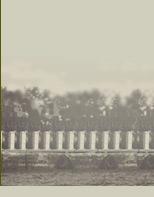


 | |||
| Foundation of the town | |||
| Arms | |||
| City and way of life in ancient town | |||
| Development navidation on the Volga | |||
| Flooding of the town's part | |||
| The present day of the town | |||
 | |||
 | |||
 | |||
 | |||
 | |||
City and way of life in ancient town
Yuryevets posad of XVI-XVII centuries was near the mountain, on the bank of the Volga.
Monasteries were around it. They defended the town. In the north - Lomova hermitage, in the south - Tikhvin monastery, in the west - Bogoyavlensly, in the east - Krivoezersky, which standed on the left bank of theVolga.
In the middle of Yuryevets there were a market. Very many stalls were in the market- about sixty. In medieval Yuryevets there were many forges-sixteen, and nine forge places were direct in the market.
Many military people lived in the town-fortress-streltsy, cannonmen, sedelniki, banniki, pishchalniki, vorotniki.
The number of things surrounding the peasant, from a point of view of the modern person extremely restricted. But each thing was necessary in work, in life. People defined principal directions of crafts. It were the subjects from accessible to the simple foreman materials, which could be given him by the surrounding nature wood, clay, flax, wool, iron. There were more than 50 aspects of crafts in Yuryevets district in 1913. The men were engaged in crafts, children, woman, and children constituted a significant part working - 2576 children, and men - 3877. It indicates that craft began to comprehend in childhood, working the assistants of the old foremen.
The fate of Yuryevets was common with cities and villages of long-suffering Ponizovskaya land all all Russia. Tatar-Mongolian khans put in new attacks and campaigns.
But Russia rallied around Moscow rose against conquerors. Yuryevets warriors were on Kulikovo field in 1380 in regiments of their prince Vladimir Gorodetsky- Serpukhovskoy, Dmitry Donskoy's cousin and associate. However the struggle against invaders was not completed even after Mamaev battle. Especially suffered Russian Volga region especially suffered from Kazan khanate, appeared near to its borders after the Large Horde disorder. Ivan the Terrible cut "The Kazan knot" in 1552.
After victory Ivan the Terrible granted Yuryevets to Astrakhan tsarevitch Kaybula. In 1556, with a falling of Astrakhan, all multilingual Volga was included in structure of Russian state.
Subsequently, Ivan the Terrible gave Yuryevets in appanage to Kaybula son Michael Kaybulich, outstanding statesman of Russia of that time.
Many tatar families have moved to Yuryevets then. Their descendants fighted for independence side by side with Russian people.

